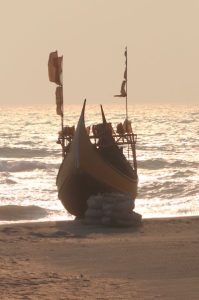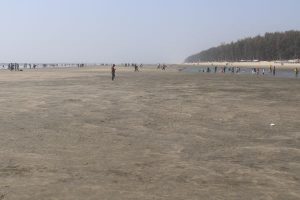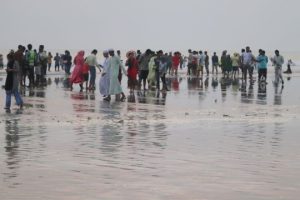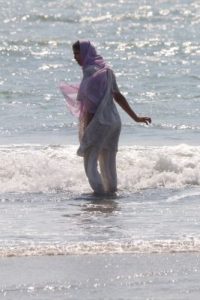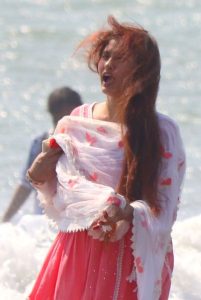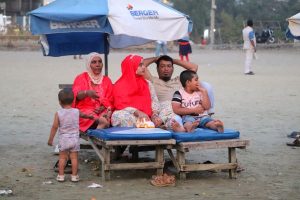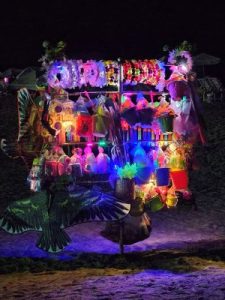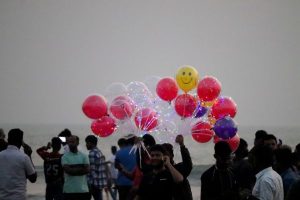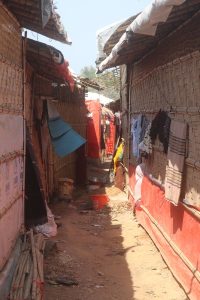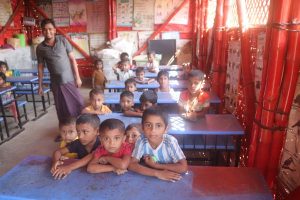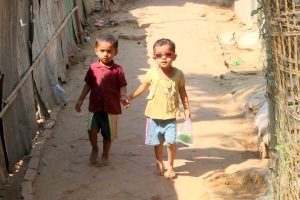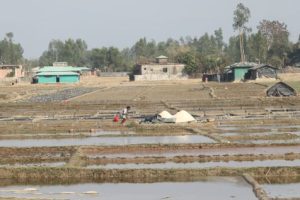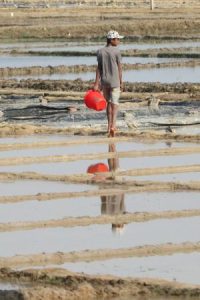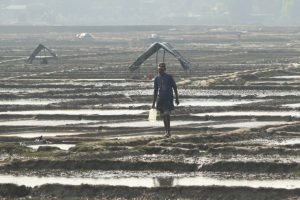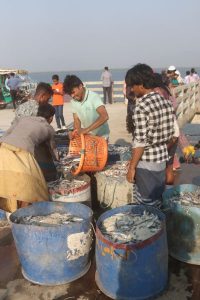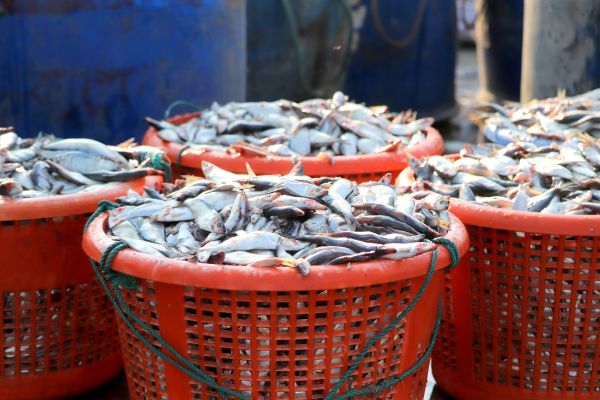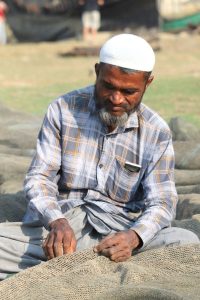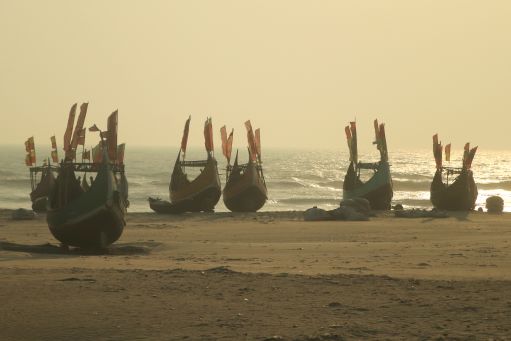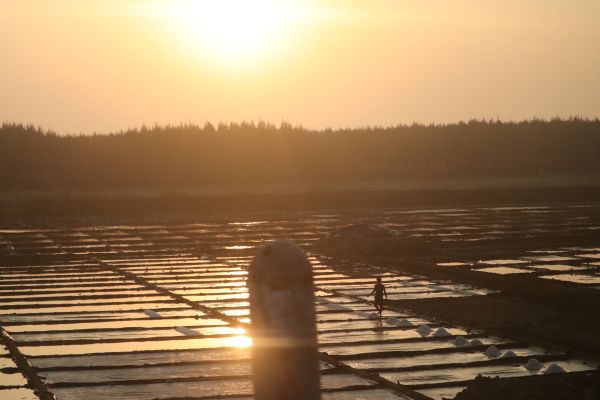We have moved to another corner of Bangladesh, the southeast, where we have established ourselves for a few days in Cox’s Bazar. Named after captain Hiram Cox, a colonial Britisher who created a settlement here in the 18th Century. There are two things of which Cox’s Bazar has the biggest in the world.
The beach
One is the beach. With 120 kms, Cox’s Bazar beach is the longest ‘uninterrupted naturally occurring sea beach’ in the world – whatever that means exactly. And the biggest tourist destination in Bangladesh, attracting roughly 3 million visitors a year.
It shows, in the number of beach resorts along the coastal road, some of them quite flashy. And in the number of people on the beach, during the whole day, until quite late in the evening. There is not really a beach culture like we know it, because taking off any part of your clothing is obviously not done in a Muslim society, especially for women, so beach wear is absent. Instead, people walk fully clothed into the water, usually not much further than ankle-deep, occasionally calf-deep. But they clearly have a lot of fun, together – whole families gather for sunset, or on a pair of reclining chairs under a parasol. Little stands sell food, others sell toys, and a man walks around with illuminated balloons. An experience.
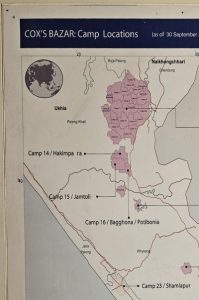
a map of the camps, the big purple blob contains the first 20, with more – smaller – camps further south
The camp
The second thing Cox Bazar has the biggest of in the world, is a refugee camp, with an estimated 1.2 million people, Rohinyas who fled genocide from Myanmar, just across the border, in 2017. Actually, the camps are a bit outside town, about an hour’s drive. We have been given official permission to visit, from the RRRC, the government body that manages the refugee operations together with UNHCR and one of my former employers, IOM. Over a million people is too many to manage, of course, so they have been distributed over a total of 34 individual camps, the majority in a contiguous area called Kupalotang.
We are received by the camp manager, a very able Bangladeshi, who explains some of the challenges. There are more than 100 NGOs and INGOs active, whose contributions need to be coordinated by sector, like Health, Education, Water and Sanitation etc. I know from experience that this is no easy task. He also corrects us, the people here are not referred to as refugees, but as Forcefully Displaced Persons, to highlight the involuntary nature of their migration. And he stresses that the only solution for these people is safe return to their own country, whereby he emphasized the word ‘safe’.
On our walk around the camp we are quickly spotted by two young guys who speak excellent English. Whether we want to meet their chairman? We are guided through some narrow, real narrow, alleys in between shelters – shelters is what you call the temporary accommodation, in this case tarpaulins reinforced with bamboo, and a bamboo roof -, to a wooden structure, the office of one local organisation that advocates for the return of Rohinyas. We politely stay a while, talking about the plight of the refugees, no, the FDPs, and then take our leave again. There is really nothing we can do for these people.
The further we get into the camp – this specific one, camp 1West -, the more squalor the conditions. Lots of good initiatives, there are toilet cubicles, separately for men and women, and bath cubicles, water pumps. We are invited into a learning centre, for very young children. People can go to health posts. Camp residents have also started small businesses, little shops sell sweets, drinks, daily necessities. But as soon as you get from the main throughfare, you note that the accommodations, already pretty small for a whole family, are cramped together, there is hardly space for the laundry. And yet, this has all the hallmarks of semi-permanent, these people are not going back for a long time. For starters the politics need to change, Myanmar needs to allow them to come back. And subsequently needs to provide protection, too, from the Buddhist majority that attacked them in the first place. That’s not going to happy any time soon. Cox’s Bazar may hold this world record for a while, still.
There is a bit more on the camp here.
Teknaf
From the camp we drive further south, occasionally passing more, isolated and smaller, camps. We are not far from the sea: sea water is let into the many ponds that have been constructed for salt winning, through evaporation. Quite an extensive industry, on both sides of the road.
What the salt is being used for, we learn when we get to the far end of Bangladesh, Teknaf, from where we do not only look across the river into Myanmar – yet another border on this trip, albeit without the possibility to cross; we also witness the fishermen bringing their catch onshore, where it is immediately packed away in containers, together with the salt, for conservation.
A little earlier, we passed a small ship yard where the fishing boats are refurbished, and some new ones being built. There are various types of boats, but the most curious are the ones with rounded front and back bow. On the way back to Cox’s Bazar there are actually hundreds of those boats, drawn onto the beach on a trailer and stacked in a neat line. Very colourful as well, as each boat is painted differently, and carries a bright flag. The setting sun helps, too.
and there is more to Cox’s Bazar (2)
